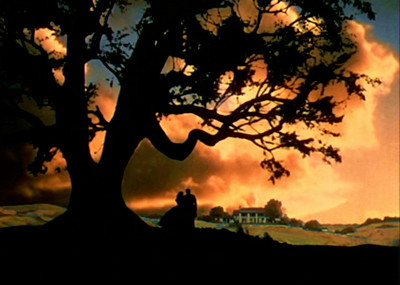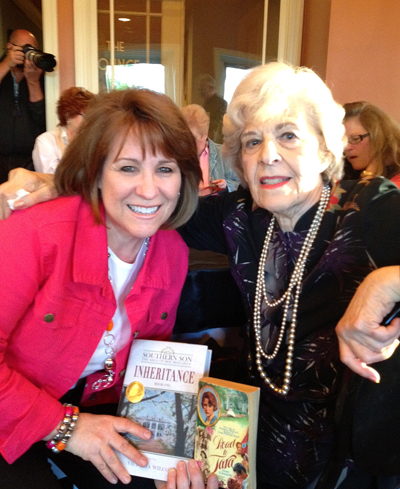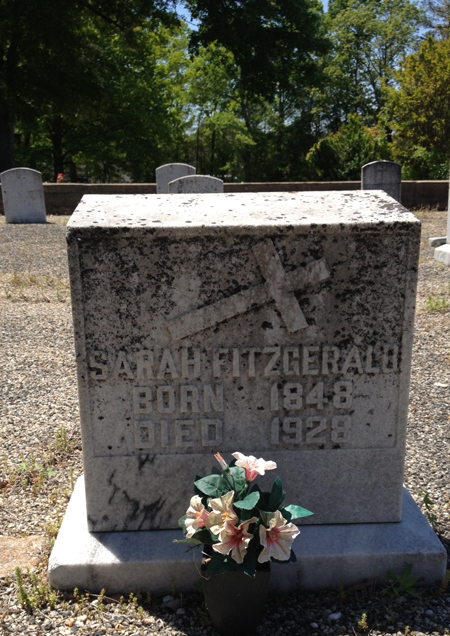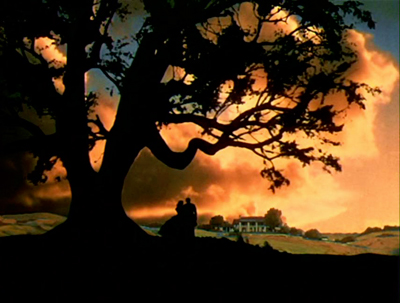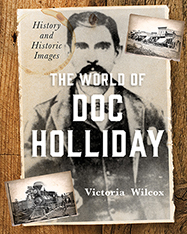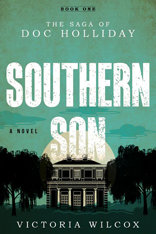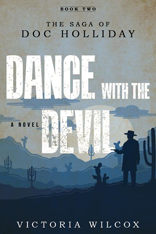Peggy Mitchell Marsh was at a loss for words, and it could not have come at a worse time. Gerald was dead, killed by a fall from his horse, and there needed to be a proper eulogy spoken, but Peggy couldn’t think of anything to say. The mourners were gathered around the grave, their faces strained with emotion and flushed with the heat of the June sun, waiting for the words of comfort that only she could give. No one knew Gerald better than Peggy, or understood what his loss would mean to them all – more than the death of a man; the end of an era as well.
Suellen and Careen, Gerald’s two younger daughters, stood sobbing quietly, leaning on Melanie’s fragile shoulder, and Melanie was crying too. She had loved Gerald like a father though she was no real relation to him. Only Scarlett stood dry-eyed, alone and apart. She was Gerald’s eldest, the most like him, and the one most shattered by his death. But she had cried herself out last night and she couldn’t cry anymore.
Beside the grave, golden hair shining in the sun, Ashley stood with the Book of Prayer laid open in his hands. Scarlett watched him out of cat-green eyes and was glad that it was Ashley who would speak the service – his melodious drawl would be a comfort to her on this most awful of all days. Ashley raised his eyes and for a moment Scarlett thought he might look her way, but he gazed past her and nodded to Will, the new foreman who had taken over at Fontenoy Hall when the Yankee Wilkerson had been fired. Will nodded back to him, and Ashley cleared his throat and looked up at the waiting crowd…
Peggy tapped her foot in anticipation, waiting for Ashley to say something, anything. Surely with all that poetry and philosophy of his, Ashley would know what to say at a time like this. But he was as silent today as he had been for the last four months, waiting for Peggy to put words into his mouth.
“Well go on waitin’ then, wait till he rots in his grave!”
She yanked the paper from her typewriter and threw it on the floor, where it settled down to rest on top of all the other pages she’d thrown out today. She had come at this scene from every angle and still it eluded her. She’d faced it full on, sidled up to it, snuck up on it from behind, and still there were no words to say. The family waited, patient and poised to go on with their lives and blissfully unaware of the struggle that she was going through on their behalf. Well, they’d just have to wait…
That was the start of Southern Son, back when I first imagined Doc Holliday’s story as one Gone With the Wind length novel framed in a Prologue and Epilogue starring Margaret Mitchell. It was brilliant, but not a good fit for the contemporary publishing industry that favors books of 300 pages or so. My story weighed in at nearly 1400 pages by the time it was done – a little long for any but the most devoted fans of historical fiction. So, on the advice of legendary agent Lila Karpf, who had helped turn Eugenia Price into the Queen of Southern historicals, I performed painful surgery on my beautiful epic and cut it into three more reasonable (and readable) length novels, and the Doc Holliday Trilogy was born – Southern Son, Dance with the Devil, and Dead Man’s Hand . The operation turned out well, as Doc’s story had a natural beginning, middle, and end already, and the books followed suit. The only thing lost was the Prologue/Epilogue frame, which is now a Postscript at the end of Book Three. It was the right place to put it, but I miss seeing it as the introduction to the story.
But this weekend I got to visit with it again, by visiting with the woman who inspired it – not Margaret Mitchell herself, but her biographer, Pulitzer Prize nominee Anne Edwards, author of “Road to Tara.” The occasion was the 10th anniversary celebration of the Marietta Gone With the Wind Museum, and Ms. Edwards was the celebrity guest – and someone I wanted to personally thank.
I first read Edwards’ “Road to Tara” as a follow-up to reading Gone With the Wind after I moved from California to Atlanta (the best place to be while reading Gone With the Wind), and found a tantalizing bit of information hiding there: Mitchell had endured a long writer’s block near the end of her project which was cured by attending “a family funeral in Fayetteville” after which she also changed the name of the O’Hara plantation from its original and tedious “Fontenoy Hall” to “Tara.” Whose funeral would have had such an impact on an author? What happened in Fayetteville to inspire what would become the legendary name of the O’Hara’s home? Out of Ms. Edwards’ entire and excellent biography, those were the questions that remained with me.
The questions were still haunting me years later when I decided to write a novel about Doc Holliday and his cousin Mattie, the girl who became the model for Melanie in Gone With the Wind. And short of calling up Ms. Edwards to ask about her thoughts on the matter, I found the next best thing: her file of research notes that had been graciously donated to the Atlanta History Center. What fun for a lover of history and research! I made an appointment at the archives and was invited to put on white gloves and finger through the files – the standard means of protecting historic printed material. And what I found there not only answered my questions, but made me all the more curious.
The “family funeral in Fayetteville,” was for Sarah Fitzgerald, Margaret’s grandmother’s sister, who had never married but stayed on at the family’s cotton plantation after the Civil War. It was Sarah’s stories told through the years, her recollections of life during and after the War, that had inspired Mitchell’s work. No wonder she left the funeral ready to get on with the tale.
And there was something more about that family funeral. For Sarah Fitzgerald’s cousin was also likely there, an old nun named Sister Melanie after whom Mitchell had named her kindest character – and who, in her younger days, was known as Mattie Holliday, cousin to John Henry “Doc” Holliday. So at that funeral in Fayetteville were all the elements of the family stories: the memories of Sarah Fitzgerald who was honored there, the memories of Doc Holliday who had gone west into legend, and Sister Melanie who remembered them both.
It was the perfect beginning for my book: Margaret Mitchell with writer’s block visiting that family funeral in Fayetteville and hearing the stories that inspired her own – and one she had never heard before, about Sister Melanie’s long-ago love, John Henry “Doc” Holliday. Mitchell had even given me the perfect segue. Her writer’s block coming in the middle of the Gerald O’Hara funeral scene allowed me to go from her fictional funeral to the real funeral then back in time to when John Henry’s grandfather was buried in the same cemetery. Without even moving, the reader could go from fiction to fact, from 1928 to 1862. When I realized that my story would return to that same cemetery at least two more times, that beginning seemed even better.
And what was it about the Fayetteville funeral that caused Mitchell to return home and change the name “Fontenoy Hall” to “Tara”? I think that can best be answered by my fictional Sarah Fitzgerald, who was a starry-eyed young woman with romantic ideas about Mattie’s cousin John Henry when they met at one of those funerals. According to her, “Tara was the seat of the high kings in Ireland, and the place where they were buried as well. I reckon this is like Tara, too, holy Irish ground, consecrated with the bones of our Irish ancestors. Like our own little bit of Ireland.” Likely that was the same kind of conversation that went on at the funeral Mitchell attended, when the whole Irish family was gathered to honor the real Sarah Fitzgerald. In naming her fictional plantation Tara, she was honoring her Irish roots.
I hope that Mitchell would like the way I have played on her story, going back to the real people behind her characters and tying together the generations. I hope that Anne Edwards will be pleased to know that her own writing, together with Margaret Mitchell’s, inspired a whole new Southern story. Who knew that her Road to Tara would lead to Doc Holliday?
Interesting Links
Gone With the Wind Museum
Anne Edwards in People Magazine
Tara
Fayetteville City Cemetery Video
Click the book cover below for more info or to order.
